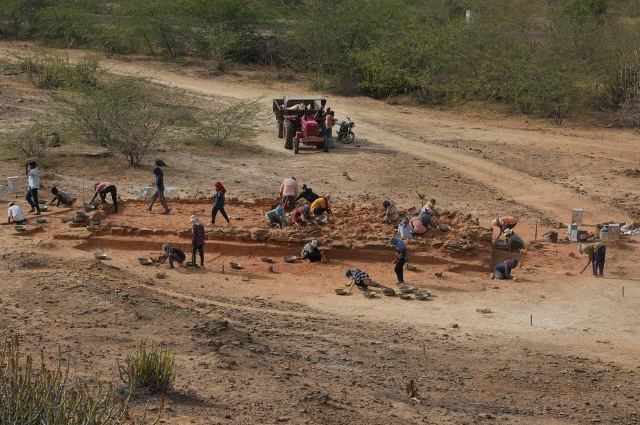Recently, the Kerala University has unearthed some evidence that is claimed to show evidences regarding the Early Harappan Age.
The Indus Valley Civilization, one of the oldest in the counting of Civilizations which is supposed to have cradled all other civilisations of the world is now fascinating today the world, especially the historians and archaeologists. Here and there, discoveries in what was once the tracts of Harappan Age at at certain age is ready to reveal many secrets out there.
Archaeologists from Kerala University who had undertaken many successful expedition to discover an Early Harappan necropolis Juna Khatiya in Gujarat in 2019 have stumbled upon a more significant finding that dates somewhere 5,200 years old Harappan settlement at Padta Bet, around 1.5km near Khatiya village in Kachchh district.
In a set of collaborative expeditions, led by different archaeologists from Kerala University, researchers often shed light on the fact the areas near around Harappan necropolis have been largely responsible for the development of Harappan culture and associated in the respective geographical area.
The excavation of this settlement has been done from a small hillock locally named as Padta Bet. The remains of this site was found in an area though found in clusters and yet located in different localities.
The remains include items of rectangular and circular design and different artefacts made up of sandstone and shells.
An archaeologist remarked, 'The presence of plenty of pottery, artefacts, and a few animal bone fragments from these areas are indicative of the occupation of Harappan people in the region from the Early Harappan to Late Harappan periods, i.e. circa 3200 BCE to 1700 BCE. The evidence of ceramics also indicate the presence of Early Harappan, Classical Harappan, and Late Harappan types."
Pottery based items somewhat resemble with the Harappan culture while ceramics appear to be of some novel kinds. Potteries involve storage jars for storing some utensils. Probably, the ceramics used here were the local tradition of this region.
Due to the unstable nature of the landscape, assumptions are being made on the decline of the structural remains from this region and that's why scarcely any Harappan Age settlement would have thrived here any longer.
As of now, the Harappan settlements that have been discovered either large or small have been found in plain areas while the site is located on the hill top. The Padta Bet has a very strategic location with access to the view to valleys despite being surrounded by ridged mountains formations all over.
A small stream that flows close to the hillock must have been the source of life in a period when the settlement actively thrived in that area.
The artefacts that have been unearthed from this region include the semi-precious stones have been made up of terracotta and spindle whorls, copper, grinding and hammer stones etc. The archaeo-zoologists have also discovered the bone remains of cattle, goat, ship or fragments of shell-fish which suggests both the domestication and exploitation of such animals. Some archaeo-botanical samples have been used to identify about the plant exploitation.
Other institutions, including the Catalan Institute of Classical Archaeology; Spanish National Research Council; University of La Laguna, Spain; Albion College and Texas A&M University, United States; Deccan College Post Graduate and Research Institute, Pune; KSKV Kachchh University, Gujarat; Central University of Karnataka; and Assumption College, Changanassery, are collaborating in the research programme.
. . .
References:
- thehindu.com
- www.researchgate.net
- gktoday.in

